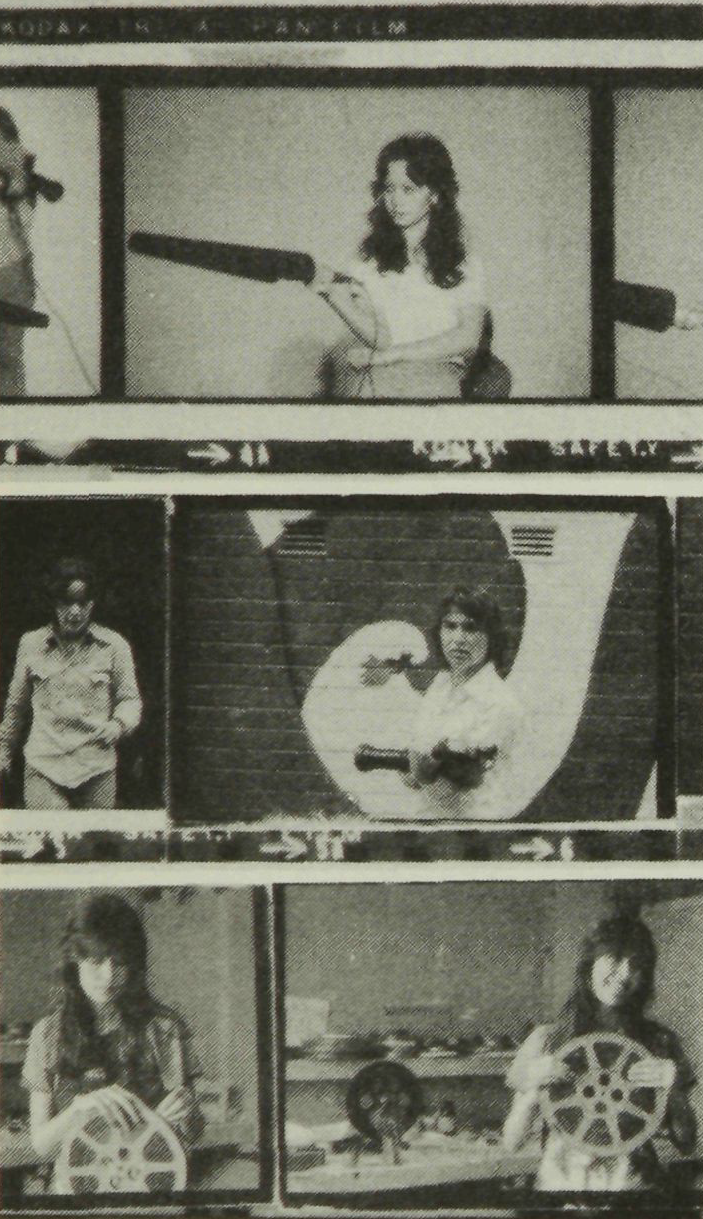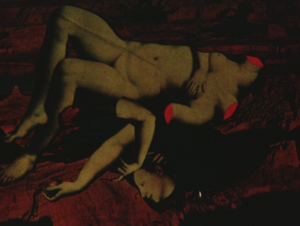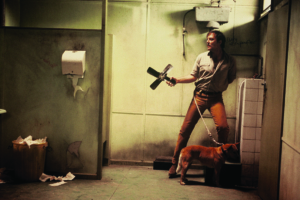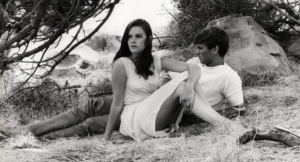Goodies and Baddies
reprinted from The Digger
Women of Australia, do you want to write, talk, make movies? Well, now is the time to start doing something about it – there is an enormous audience out there eager to read, listen and watch. And even if ‘out there’ didn’t give a stuff, there are now more than enough of us sisters to read and listen to and watch each other. Aren’t there?
There certainly are. The Sydney Women’s Film Workshop screened ten of their short films to a full house. In fact, an overfull house – about 30 people had to be turned away.
The films varied in time from about five to 15 minutes, in style from documentary to complete fantasy, in emotional content from murderous to none. Probably no one who is interested enough in the women’s movement to go and see such movies, or for that matter to ready an article about them, would disagree with the basic themes expressed: that men have regarded women as sex objects and servants, that society tries to condition girls and women into becoming dependently subservient to men, and that women have done a lot of dishes. Those themes formed the basis of all but two or three of the movies screened.
There was one thing that none of the women who made the movies chose to show. Not once was there a man portrayed in a positive, sympathetic role. I find that lack disturbing. Taken singly, there are thousands of stories in the naked city, each as valid and worthy of telling as the other, but I don’t feel comfortable with the fact that not one out of these ten stories showed a happy, good person who was also male. Well, says my right-on sister, most movies made by men haven’t shown women very sympathetically either. And that’s so, but what are we women struggling for? Revenge, or the truth? Well, the truth is not that men are all a bunch of beer guzzling, soul destroying lazy creeps, and any woman who thinks they are has obviously been mixing in the wrong circles far too long and gone a bit soft in the head. I am sick of watching people write names on little boxes to stick the other sex in. What I want to see is imagination, optimism, the envisionment of new possibilities; apparently, that wasn’t the prevailing feeling in the Women’s Film Workshop.
I didn’t join in the cheering when the heroine of Hearts and Spades turns a gun on the young men of her household, driven to this desperate extreme by their refusal to help do the washing up: partly because the last person I lived with was an unco-operative animal about the house who was also definitely female. Would the spirit of the movement cheer me if I dreamt of shooting such a woman? I doubt it. Nor was I overjoyed at the stirring song in the plain and otherwise fairly heartening documentary Women’s House: “We shall have our freedom, or no one will survive”. Wonderful. How unusual. How different to the war songs that men have chanted for thousands of years as they marched off to liberate or destroy.
I was hoping that out of ten movies, apart from the serious stuff, there’d be one that was at least a little bit silly. Immediately after interval, I though we had it. This Juice and All This Joy was a merry little fantasy about a suburban party where half the people have come straight – looking and acting like any other well dressed walking lobotomy, and the other half are all painted and done up in feathers and lap-laps and run around having a wild time. Good clean fun. But a few minutes later this was eclipsed by one of the most inspired pieces of silliness I have ever seen, Sydney Harbour. With genuine dead in the neck ABC-style narration, this told us the tragic story of the drowning of the Parramatta River Valley to form Sydney Harbour, by forced melting of the polar ice caps or something. It was a bit hard to catch the details because half the audience was cracking up, and there were deafening shrieks of “Oh what? Amazing! Un-fuckin-real!” One young woman later told me that she had run into her old twin-set-and-pearls geography teacher in the toilet, who said proudly that she had a movie showing, and to watch out for it. It seems better to keep an open mind on the intended seriousness of this film. Madam Geography, are you a brilliant hidden humourist, or just another boring old hack?
Apart from Sydney Harbour, definitely the surrealists’ pick of the evening, the movies that I found most personally satisfying were the fairly similar Ruth and The Moonage Daydreams of Charlene Stardust. Both were quite restrained portraits of the world through the eyes of an adolescent girl; putting on make-up and taking it off, getting nagged by yer Mum, looking at bridal clothes in shop windows and dreaming about the boyfriend. There was some very good city streets photography in both, and the shot that closed Moonage Daydreams – Charlene herself giving a knowing wink and grin to the camera after burning her pop magazines, schoolbooks and symbolic bridal veil – was, I thought, the most pleasing and hopeful of the evening.
For the other movies, Take 5 was so slight that it was hardly there at all. Sophie was a bland little number on a subject so distasteful to me – the selfrighteous succouring of dribbling mutant human beings (sic) – that I don’t wish to discuss it any further. Still Life showed us an artists’ model suffering through her chosen work, dreaming of sitting on a bed naked with a (Female) friend and laughing uproariously, while in real life the (male) art students eye her with scarcely creditable lust and dream of things presumably too horrible to be portrayed. I was not moved. If you don’t like men staring at your naked body, why show it to them? This prosaic question kept popping up in my laterally thinking mind and What’s the Matter Sally? told us, in TV-type imagery, exactly how much work the average unpaid ‘banana-brained’ housewife does every day. Possibly the slickest movie of the ten, with a few clever and well expressed cinematic ideas.
It has been pointed out to me several times that all the movies were made by women completely new to the processes of film making, and that in view of this the level of technical competence displayed was surprisingly high. I agree that, on the whole, most of the movies shown were technically excellent, but this did not surprise me. The notion that men and/or experts are the only people who can be expected to do something well has always seemed ridiculous to me.
Of course women can make good movies, and of course it’s not necessary to have gone to some institution for years and years to be told exactly how to do it. What I am concerned with is not so much camera angles and editing, but exactly what was being said, and on that level I found much that is debatable. I hope lots of people see these films, and I hope that everyone, both within the women’s movement and without, sees them with an open mind, making no prior judgements for or against, just because these are movies made by women.





